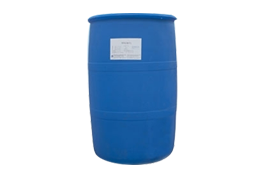Surfactant plays an important role in emulsion polymerization of industrial scale polymer production. Emulsion polymerization needs four components: water, monomer, surfactant and initiator. The concentration of surfactant in the system should be higher than the critical micelle concentration to ensure the formation of micelles. Some monomers can be solubilized in these micelles. Another part of the monomers dissolved in the water phase with surfactant molecules in molecular state, and the rest (more than 90%) of the monomers formed droplets under the action of mechanical stirring and were stabilized by the rest of the surfactant molecules.

The initiator is decomposed into free radicals by proper action, usually by heating. These radicals react with monomers in the bulk phase to form dimer or trimer groups, and the latter is more likely to encounter micelles than monomers because the total surface area of micelles is much larger than that of monomers. The monomers are then fed to these activated micelles, and the polymerization reaction spreads through the diffusion of the monomers or deactivated micelles.
The active micelles continued to grow, resulting in a complex structure of polymer particles and surfactants adsorbed on their surfaces. This process continues until all monomers are consumed. Polymer particles are stabilized or kept separated by electrostatic repulsion of ionic surfactant or steric resistance of nonionic surfactant, or both.
The amount and type of surfactant used in emulsion polymerization have influence on the stability, cleanliness, particle size, viscosity and wettability of the polymer. If the dosage of surfactant is not enough (the concentration is lower than CMC), the HLB value of surfactant is not appropriate or the charge of surfactant is not appropriate, the polymer clot will be formed or the material in the reactor will be completely solidified.
No matter what kind of surfactant is used, the larger the amount of surfactant is, the smaller the polymer particles are. Generally, the resin with smaller polymer particles has higher viscosity. Surfactant for emulsion polymerization is mainly selected according to the application of polymer. Anionic and nonionic surfactants are usually used in combination with polymers for coatings. However, the nonionic surfactant can provide shear stability. The total concentration of surfactant in emulsion polymerization system is between 0.10% and 5.0% based on polymer.